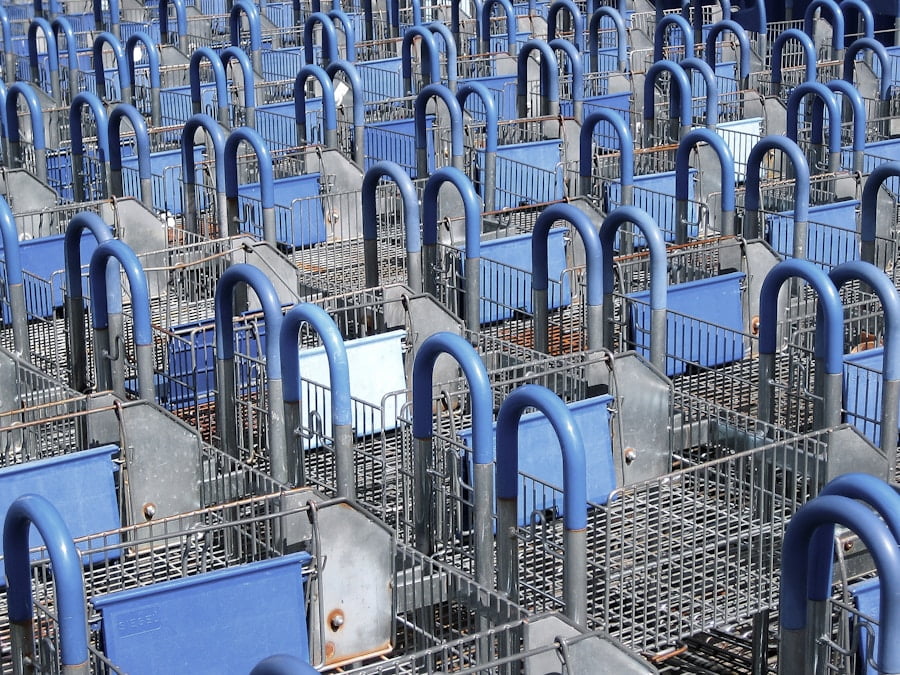Deindexing is a term that strikes fear into the hearts of website owners and SEO professionals alike. It refers to the removal of a website or web page from search engine indexes, effectively making it invisible to users searching for relevant keywords. This can have a devastating impact on a website’s traffic and visibility, leading to a significant loss in potential customers and revenue.
Understanding the reasons behind deindexing
Deindexing can occur for a variety of reasons, but the most common ones include duplicate content, spammy links, and manual penalties. Duplicate content refers to content that appears on multiple pages within a website or across different websites. Search engines like Google prioritize unique and original content, so having duplicate content can lead to deindexing.
Spammy links are another common reason for deindexing. These are low-quality or irrelevant links that point to a website. Search engines consider these links as manipulative attempts to boost rankings and may penalize the website by removing it from their indexes.
Manual penalties are imposed by search engines when they detect violations of their guidelines. This can include practices such as keyword stuffing, cloaking, or participating in link schemes. When a manual penalty is imposed, the website may be deindexed or its rankings severely impacted.
Assessing the damage: how much content was lost?
When a website is deindexed, it is crucial to identify which pages have been affected. This will help in understanding the extent of the damage and prioritize efforts for recovery. There are several tools available that can help identify deindexed pages, such as Google Search Console and third-party SEO tools like SEMrush or Ahrefs.
Once the deindexed pages have been identified, it is important to assess the impact on traffic and rankings. Analyzing data from Google Analytics or other web analytics tools can provide insights into the loss of organic traffic and keyword rankings. This information will be valuable in developing a recovery plan.
Identifying the root cause of the issue
To prevent future deindexing issues, it is crucial to identify and address the root cause of the problem. This requires a thorough investigation into the website’s content, backlink profile, and technical aspects. Steps to take include conducting a content audit to identify duplicate or low-quality content, analyzing the backlink profile to identify spammy links, and conducting a technical SEO audit to identify any issues that may be triggering deindexing.
Fixing the root cause of the issue is essential to prevent future deindexing. This may involve removing duplicate content, disavowing spammy links, or fixing technical issues such as broken links or slow page load times. It is important to work closely with SEO professionals or consultants who can provide guidance and expertise in addressing these issues effectively.
Developing a plan of action for recovery
Recovering from deindexing requires a well-thought-out plan of action. This plan should outline the steps to be taken to rebuild the website’s visibility and rankings. It should include strategies for rebuilding website architecture and structure, creating and implementing a content marketing strategy, building high-quality backlinks, engaging with the audience, leveraging social media, and monitoring progress.
Rebuilding your website’s architecture and structure
A well-structured website is essential for search engine visibility and user experience. After deindexing, it is important to reassess the website’s architecture and make necessary changes. This may involve restructuring categories and subcategories, optimizing internal linking, improving navigation, and ensuring that each page has a clear purpose and target keyword.
Additionally, it is important to optimize on-page elements such as meta tags, headings, and URLs. These elements provide important signals to search engines about the content of each page and can help improve rankings.
Creating and implementing a content marketing strategy
High-quality content is crucial for attracting and engaging users, as well as improving search engine rankings. After deindexing, it is important to reassess the website’s content strategy and make necessary changes. This may involve conducting keyword research to identify relevant topics and keywords, creating a content calendar, and producing high-quality, original content on a regular basis.
It is also important to optimize content for search engines by incorporating target keywords naturally, using descriptive headings and subheadings, and including relevant internal and external links. Additionally, promoting content through social media, email marketing, and other channels can help increase visibility and attract more traffic.
Building high-quality backlinks to your site
Backlinks are an important ranking factor for search engines. After deindexing, it is important to reassess the website’s backlink profile and make necessary changes. This may involve conducting a backlink audit to identify low-quality or spammy links and taking steps to remove or disavow them.
To build high-quality backlinks, it is important to focus on creating valuable content that others will want to link to. This can include guest blogging on relevant websites, participating in industry forums or communities, reaching out to influencers or bloggers for collaborations or partnerships, and creating shareable infographics or other visual content.
Engaging with your audience and building a community
Engaging with the audience is crucial for building brand loyalty and attracting new customers. After deindexing, it is important to reassess the website’s engagement strategies and make necessary changes. This may involve responding to comments or messages promptly, encouraging user-generated content such as reviews or testimonials, hosting contests or giveaways, or creating a forum or community where users can interact with each other.
Building a community around your brand can also help increase visibility and attract more traffic. This can be done through social media groups or pages, online forums or communities, or hosting events or webinars.
Leveraging social media to promote your content
Social media platforms provide a valuable opportunity to promote content and attract more traffic to your website. After deindexing, it is important to reassess the website’s social media strategy and make necessary changes. This may involve identifying the most relevant social media platforms for your target audience, creating engaging and shareable content, and actively promoting your content through social media channels.
It is also important to engage with your audience on social media by responding to comments or messages, sharing user-generated content, and participating in relevant conversations or discussions. This can help build brand loyalty and attract more followers and potential customers.
Monitoring your progress and adjusting your strategy accordingly
Monitoring progress is crucial for evaluating the effectiveness of your recovery efforts and making necessary adjustments. After deindexing, it is important to regularly monitor key metrics such as organic traffic, keyword rankings, backlink profile, and engagement metrics. This can be done through web analytics tools, SEO tools, or social media analytics.
Based on the data collected, it is important to adjust your strategy accordingly. This may involve optimizing underperforming pages or keywords, refining your content marketing strategy, building more high-quality backlinks, or adjusting your social media tactics. Regular monitoring and adjustment will help ensure that your recovery efforts are on track and effective.
Staying up-to-date with SEO best practices to avoid future deindexing issues
To avoid future deindexing issues, it is important to stay up-to-date with SEO best practices and guidelines. Search engines like Google regularly update their algorithms and guidelines, so it is crucial to stay informed about these changes and adapt your strategies accordingly.
This can include staying informed through industry blogs or forums, attending SEO conferences or webinars, or working with SEO professionals who can provide guidance and expertise. By staying up-to-date with SEO best practices, you can ensure that your website remains visible and ranks well in search engine results.
Deindexing can have a significant impact on a website’s visibility and rankings, leading to a loss of traffic and potential customers. However, by taking proactive steps to identify the root cause of the issue, developing a comprehensive recovery plan, and implementing effective strategies such as rebuilding website architecture, creating high-quality content, building high-quality backlinks, engaging with the audience, leveraging social media, and monitoring progress, it is possible to recover from deindexing and regain search engine visibility. By staying up-to-date with SEO best practices and guidelines, you can also avoid future deindexing issues and ensure long-term success for your website.







































0 Comments